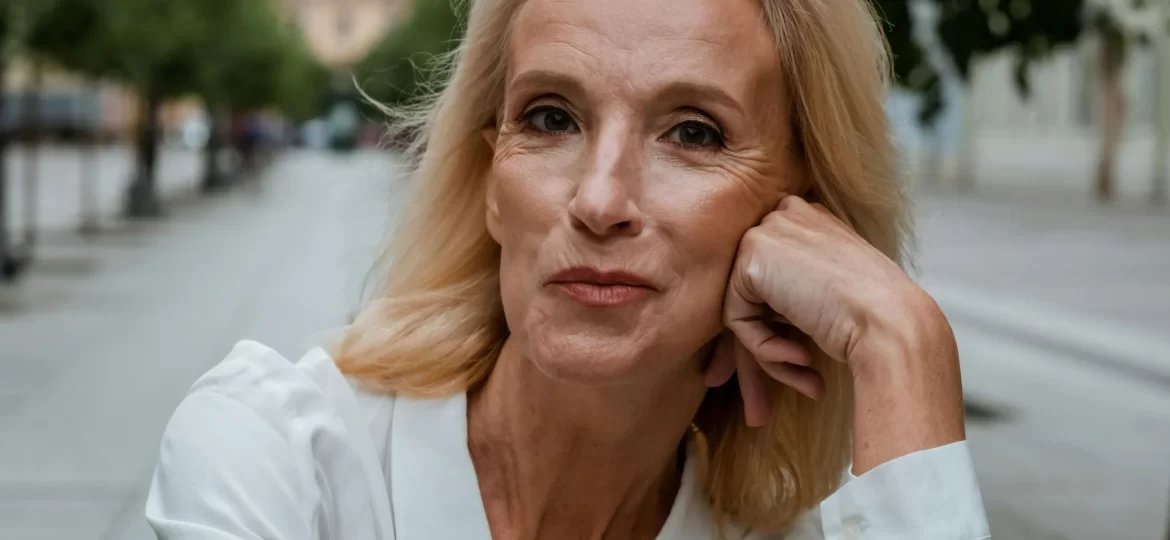
The Terror of Time: When Youth Becomes the Only Currency
“If we were shown in a mirror the face we will have—or have—at sixty, and compared it to that of twenty, we would fall backward and be afraid of that face,” wrote Madame de Sévigné centuries ago.
Yet today, that fear has metastasised into something far more pervasive and destructive than simple vanity—it has become a cultural pathology, one that is quite literally reshaping faces and souls across the Western world. Simone de Beauvoir captured this horror when contemplating ageing film stars: “I shudder when I find in films or newspapers of yesteryear their forgotten freshness.” Like an inverted Picture of Dorian Gray, we recoil not from the portrait of corruption, but from the evidence of natural progression. Neither in literature nor in life, Beauvoir observed, had she “met any woman who looked upon old age with complacency.”
The Panic Spreads Downward: When Twenty-Somethings Fear Tomorrow
What would have seemed unthinkable even a decade ago is now routine: people in their early twenties are already booking Botox appointments. Dr Maya Rodriguez, based in Los Angeles, has witnessed this dramatic shift first-hand. “A decade ago, very few people below the age of thirty-five came to my clinic. Now, almost thirty per cent of those seeking my advice are young.” They arrive clutching filtered social media selfies, desperate to “stay looking young”—before they’ve even finished being young.
This trend has fuelled what sociologists call a “permanent present” mentality: a psychological state in which young people feel pressured to remain eternally youthful while being hyper-aware of ageing’s inevitability. The constant barrage of digitally enhanced images—compounded by endless Zoom calls that turn every interaction into a mirror—has transformed minor imperfections into sources of existential dread.
A TikTok influencer known as It’s Me Tinx gives voice to the deeper despair behind the trend: “How badly are we doing in the United States that the only hope people feel they have is to become an influencer?… Gen Z are really open about it. It’s like we’re nihilistic because we feel we are never going to own property, we’ve got nothing to live for. What’s the point?”
The Economics of Desperation
This beauty panic hasn’t emerged in a vacuum. When economic stability disappears and traditional markers of adulthood—home ownership, career security, family formation—slip out of reach, the body becomes the last frontier of control. If you can’t build wealth or buy property, you can at least buy time—or the illusion of it.
The beauty industry has exploited this vulnerability with surgical precision. Social media platforms are flooded with content tagged #lipflip and #preventativeageing, while influencers rack up millions of views promoting procedures to audiences barely out of adolescence. One TikTokker called Dearwater has amassed 71.3 million views by promoting cosmetic interventions to viewers who arguably should be more concerned with student loans than smile lines.
The Paradox of Artificial Youth: Looking Older by Trying to Look Younger
Here lies the cruel irony of our age-denial culture: in chasing eternal youth, we’re creating a generation that looks simultaneously ageless and ancient—frozen rather than fresh. The “Botox look” isn’t imaginary; it’s the flattening of human expression in favour of a blank perfection that lacks life.
Like artificial flowers in a luxury hotel—technically flawless, but devoid of living energy—cosmetically altered faces lose something essential. Individual character is being sacrificed in pursuit of a homogeneous ideal where everyone appears as though “a mould has been stuck on their face.”
The medical reality is even more troubling. As Dr Wexler explains, “If you do too much Botox on your forehead for many, many years, the muscles will get weaker and flatter.” Paralysed muscles cause surrounding areas to compensate, creating new wrinkles. Long-term users may find their skin stops responding to injections altogether—leading to more frequent treatments for ever-diminishing returns. A literally diminishing cycle of dependency.
The Psychological Deep Freeze: What We Lose When We Stop Time
Carl Jung understood something we’ve collectively forgotten: ageing isn’t failure, it’s completion. He called later life the “afternoon of life”, recognising that just as we need the full arc of the sun to nourish the Earth, we need the full arc of time to become whole. Jung urged us to “enjoy the afternoon of life and regard death as life’s goal”—not as defeat, but as the natural culmination of a fully lived experience.
Our urge to freeze time on our faces may reflect a deeper psychological freezing—an inability to embrace change, growth, and the wisdom that comes with it. When we erase the lines that tell our stories, we erase the stories themselves. We become strangers to our own journey.
The Dangerous Wild West of Beauty
The normalisation of cosmetic procedures has created a dangerous proliferation of unqualified practitioners. Horror stories abound: celebrated surgeons operating without medical protocols, high-street beauticians offering procedures that can permanently damage lives and faces. The further we move from trained professionals, the greater the risk—yet demand continues to outstrip safe supply.
Elizabeth, who runs a Harley Street clinic, built an entire practice around correcting botched procedures—many performed by one of France’s most lauded cosmetic surgeons. “He operated in a room without even putting on proper scrubs,” she says. He is still practising today.
The Resistance: Voices of Authentic Beauty
Yet signs of rebellion are rising—from corners where we least expect them. The late Franca Sozzani, iconic editor of Vogue Italia and dubbed “the Pope of Fashion” by Armani, openly rejected facial enhancement: “I’m really against Botox or any facial injections—it changes the face… My face shows my life. It’s better to age with dignity than to age with these fake cheeks and lips.”
Isabella Rossellini, dropped by Lancôme in her forties for being “too old”, appeared on the cover of Vogue Italia at 71—unretouched and radiant. “I find it very reductive to appear younger than my age—and in any case, it’s a losing battle,” she said. “I asked Vogue Italia not to retouch the photos and to leave me with my wrinkles.”
That same Timeless Issue of Vogue Italia featured only women over 60, including 89-year-old fashion icon Baddie Winkle and 66-year-old transgender model Tracey Norman. These images offered something quietly revolutionary: the beauty of accumulated experience.
Reclaiming Time: A Call for Authentic Maturity
We stand at a crossroads. We can continue down the road of artificial preservation, building a society of frozen faces and stunted emotional growth. Or we can reclaim the radical idea that ageing is not failure but fulfilment—evidence of resilience, experience, and personal evolution.
The real choice isn’t between youth and age, but between authenticity and artifice; between depth and surface. In a world dominated by filters, tweaks and injectables, the most subversive act might be simply allowing our faces to tell the truth.
As Beauvoir once noted, “We feel as others make us feel.” Perhaps it’s time to change not our faces—but our feelings. To build a culture that sees the afternoon light not as fading, but as golden.
The question isn’t whether we can stop time—we can’t.
The question is whether we can stop trying, and find the courage to embrace the full arc of human life—lines and all.

